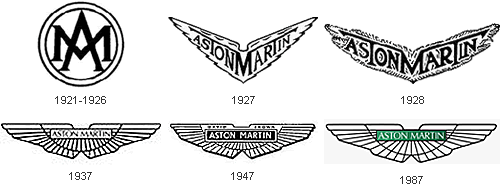Slavia Logo (1895 – 1905)
Bicycles and motorcycles were made at the Mladá Boleslav workshop under the Slavia brand. The logo was based on a wheel with lime leaves, which were to symbolise the Slav nations. The names of the company’s founders (Laurin & Klement) were added and later became the main motif for the new logo.
L&K Logo (1905-1925)
The design of the L&K logo was influenced by Art Nouveau, an artistic style at the beginning of the 20th century. The initials of the company’s two founders are (probably in connection with the name Václav Laurin or laurel, lat. laurus nobilis) surrounded by laurels in the shape of a wreath, which has been associated with victors and the famous since antiquity. The laurels possibly foretold the success of L&K.
Škoda Logo (1926-1933)
Cars were produced in Mladá Boleslav under the Škoda brand from 1926. Although the brand’s name changed completely, the form of the new product logo shows continuity with the previous stage. The Škoda logo has a new, oval shape, but the brand name is still the dominant element in the centre and is surrounded by laurels.
Škoda Logo (1926-1990)
The logo with the famous “winged arrow” was first used in 1926. Its origin is shrouded in mystery, sometimes the author of the idea (the stylised head of an Indian wearing a headdress with five feathers) is said to be the commercial director of Škoda Plzeň, T. Maglič. The blue and white circular logo, which is completed by a right-moving winged arrow with a stylised pinion, is currently used on some original Škoda parts (e.g. on window glass and engine blocks).
Škoda Logo (since 1999)
Although the Škoda logo is viewed as one of the most original and stylistically clean manufacturing company trademarks in the world, the author is not yet known. The black and green logo, which has been used since 1994, gives the Škoda brand a greater degree of originality – black symbolises the hundred-year tradition, green signalises environmental production.







